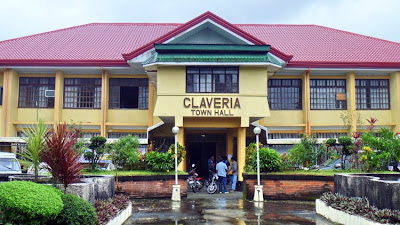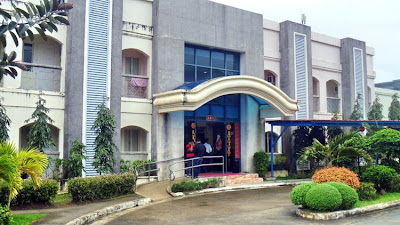| Marcos Museum |
After our lunch and church visit at Paoay, we again boarded our bus for Sarrat, the birthplace of the late Pres. Ferdinand E. Marcos. Our first stop was, fittingly, the Marcos Museum. The museum, overlooking the Padsan River, is actually the Edralin house where Marcos was born on September 11, 1917 to Mariano and Josefa Edralin Marcos, both school teachers from well-to-do families. He lived here until he was 8 years old when his family moved to Batac.
| The museum’s ground floor |
The house then was a traditional 2-storey bahay na bato, with a red brick ground floor for storage and the wooden upper level, with its hardwood floor, reserved for the living quarters. It was renovated by First Lady Imelda R. Marcos in 1977, the president’s 60th birthday, but was left abandoned after the fall of the Marcos before being restored again. Many of the items on display were taken from the Malacanang Palace Museum as well as from the Malacanang of the North in Paoay.
| The museum’s second floor |
On display are the 4-poster bed where Marcos was born, the old clock set to the time of his birth, the many barong tagalogs he wore on different occasions, musical instruments (harp, piano, etc.), many old photographs of the family, busts of Don Mariano and Dona Josefa Marcos, the license plates Marcos used for his cars, the Marcos family tree on the wall facing the stairs, as well as documents and old furniture (the escrihana used by Don Fructuoso Edralin y Carpio, the presidents grandfather, when he was vice-gobernadorcillo; the president’s swivel chair, aparadors, etc.).
Marcos Museum: Brgy. San Agustin, Sarrat, Ilocos Norte. Open Mondays-Saturdays, 8 AM-12 noon and 2-5 PM.









